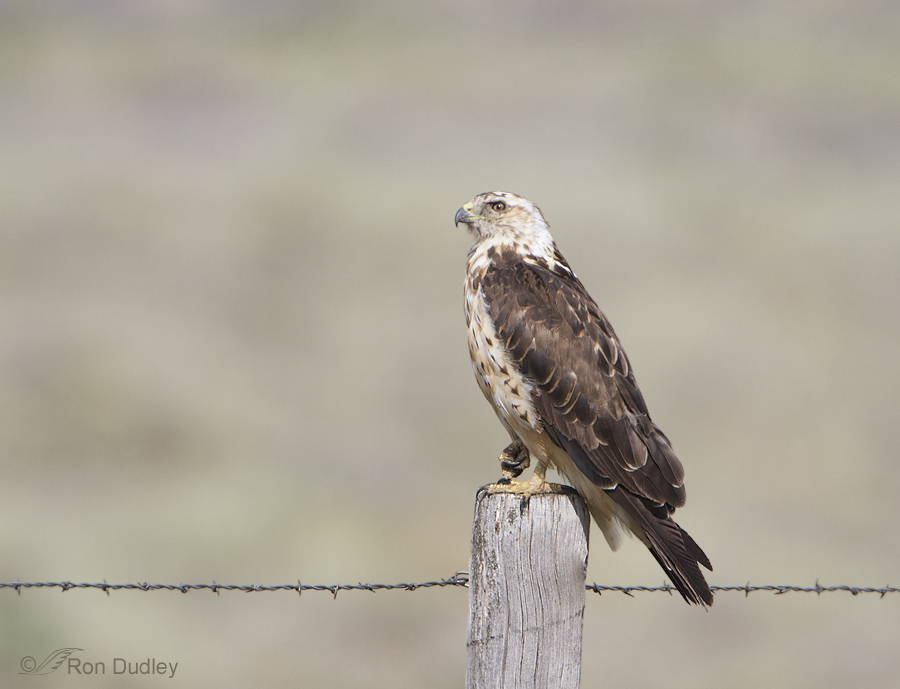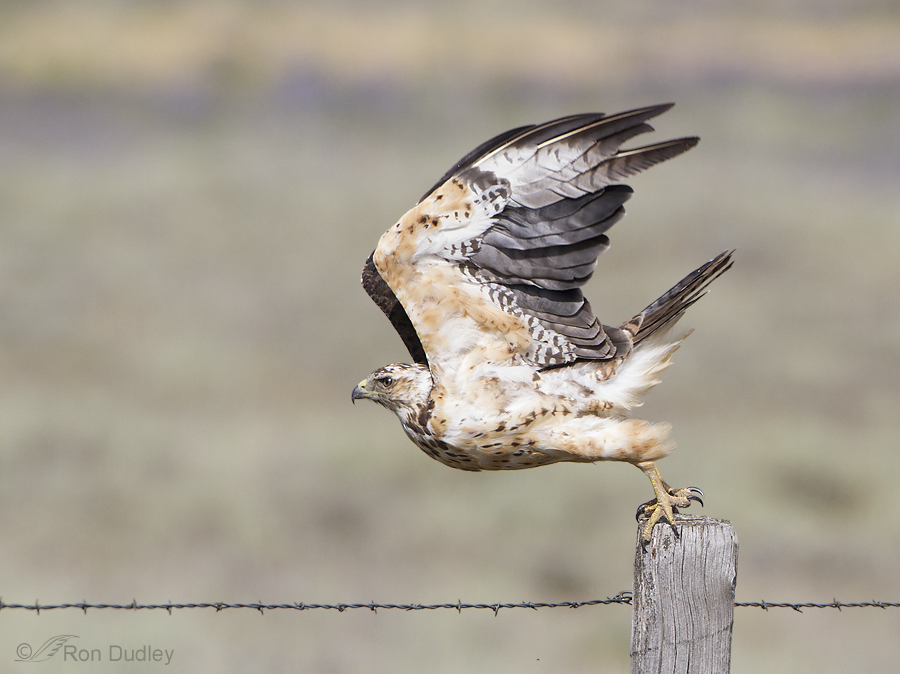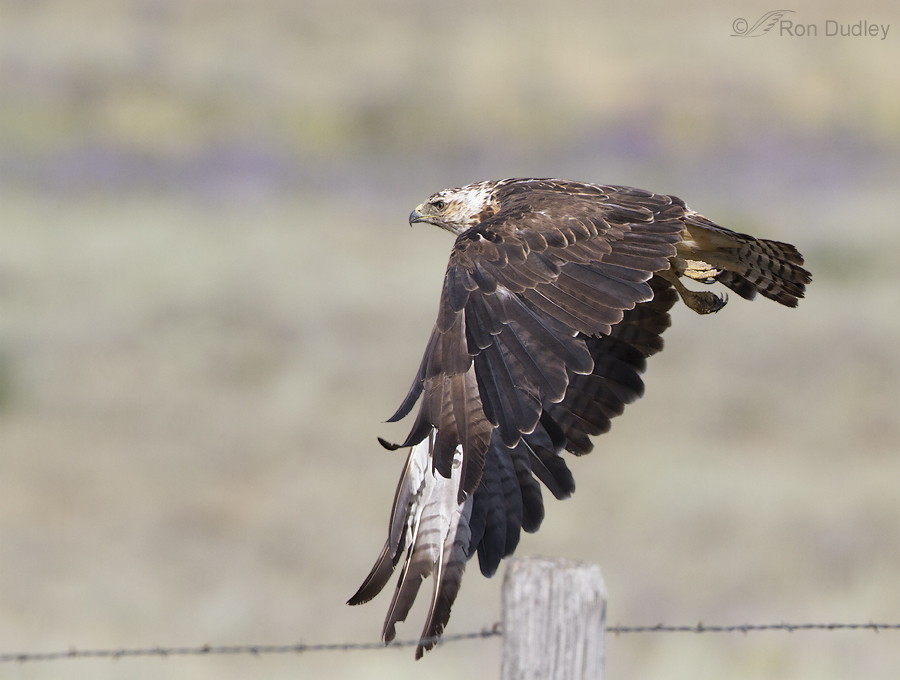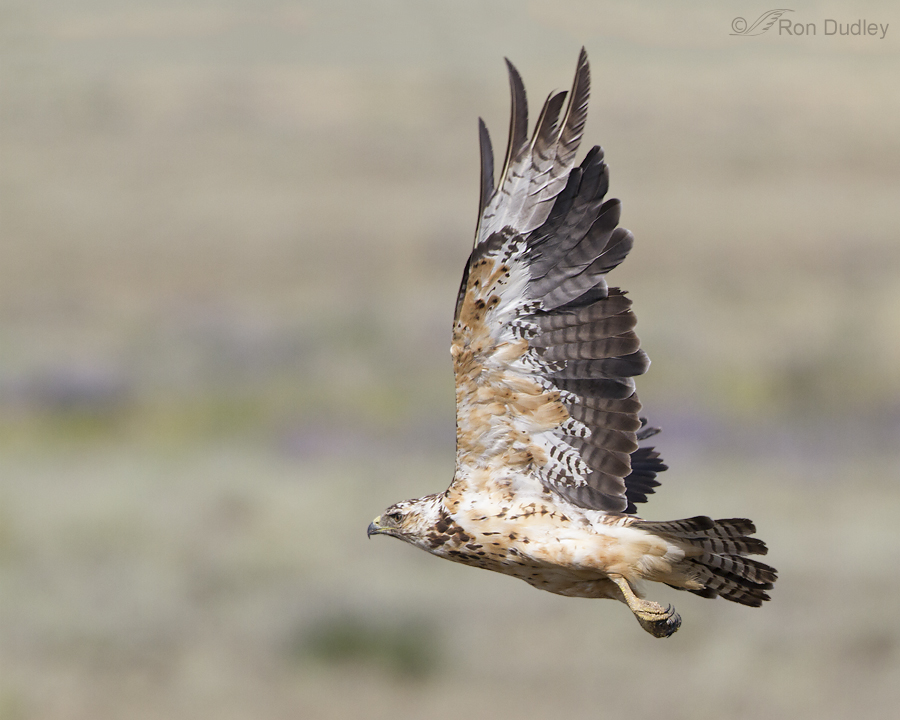I’m always interested in the color phases of the various raptors I encounter so when we found this subadult Light Morph Swainson’s Hawk on July 25 on our last trip to southwest Montana it got my attention.
1/3200, f/5.6, ISO 800, 500 f/4, 1.4 tc, natural light, not baited, set up or called in
These worn young birds look white-headed in spring and early summer because of fading – much different from the adults (I’ll be posting a light morph adult soon).
This bird was quite relaxed at first, as you can see by the position of its right foot but as soon as it put that foot down…
1/3200, f/6.3, ISO 640, 500 f/4, natural light, not baited, set up or called in
I quickly removed my teleconverter so I would be less likely to clip anything if it took off. Which it did.
1/3200, f/6.3, ISO 640, 500 f/4, natural light, not baited, set up or called in
This time I was able to get wings down…
1/3200, f/6.3, ISO 640, 500 f/4, natural light, not baited, set up or called in, canvas added for composition
and wings up in the sequence. I wish the hawk had looked toward me for this last shot but it didn’t happen.
I still have a lot to learn about all the raptor color phases but I’m working on it. Please don’t be shy with any corrections or further details that I may have missed.
Ron






Terrific shots capturing great positions of the wings. Very informative discussion too.
Just sensational Ron! I think you not only study the birds, but I think you must have a 6th sense about them, more than simple observation. Thanks so much for sharing your wonderful shots!
Charlotte Norton
Hi Ron:
Happy to clear up the sub-adult issue. Swainson’s Hawks (unlike most buteos) do have a sub-adult plumage and do take 2 molts to acquire their adult plumage. There are examples from spring and fall on my website, and of course I have hundreds of other examples, being lucky enough to live in Utah where we see tons. Just went out today and photographed a large group hanging out and foraging together….this is the best time of year for that as you know.
Anyway, this time of year they will have a full set of adult flight feathers (wings and tail) with 2 generations of adult feathers (replacing any retained juv flight feathers from the previous year first) but still have a juvenile-like body plumage. Hope this helps. Juveniles from last year molting right now are in transition to sub-adult, they do not get their adult body plumage until next year.
Thanks, Jerry and yes, it certainly does help me understand the issue better.
I love the majesty, grace and beauty of these birds (well almost any bird really). And today I saw something I haven’t noticed before – a hint of green around the beak. Thank you. Something new to see and learn every day.
Thank you, Elephant’s Child.
Wow! This relatively ratty bird looks beautiful against the horizontal purple and green bokeh. A nice example of a Swainson’s transitioning out of juvenile feathers.
Thank you, Mike. You’re right, “relatively ratty” describes this bird well. I found quite a few raptors up there that were much worse off than this one though. A couple of the red-tails made me wince when I looked at them through the viewfinder…
I have not heard the term subadult used with this buteo. Juvenile is the term I’m familiar with.
Bill
Bill, From raptor authority Jerry Liquori’s “Hawks from Every Angle” – “Unlike other buteos, which acquire their adult plumage after their first molt, Swainson’s Hawks acquire a sub-adult plumage”. Since this bird is beginning it’s second year I referred to it as a subadult.
It’s my understanding they can and often do reproduce in their second year (actually prior to the complete moult from their first year and do get a plumage that distinguishes them as adults rather than juveniles. Though they may not be through changing their plumage pattern in subsequent moults the are or can be adults (have progeny or have attempted to reproduce).
Bill
I’m certainly no expert, Bill. I just went with my best guess based on what Jerry said.
I know of Jerry and his guides as I own some of them and have discussed raptors on his site. It was at one time thought that Swainson’s might take up to 4 yrs to reach their adult plumage but it is now considered like with other buteos to occurs within 2 years. What appears to be true (according to Jerry) is the second year birds don’t moult completely but retain some juvenile flight feathers. But also interesting is I couldn’t find a field guide Sibley, N.G. or Smithsonian) that identified any subadults. All this is very interesting in that some authors seem to have their own terminology. I’m not certain if some of it is “competition”. Be interesting to know what the AOU supports.
Bill
Now I’m unsure what term to use, Bill. Until there’s some sort of resolution on this maybe I should go back to using “juvenile” – I just don’t know…
Those colors are surely gorgeous. This plumage is very varied at this stage.
Ron; I just posted about the Caribbean Tody, a species unique to the Caribbean. I though you might be interested in looking, since they’re unique to this area. It’s also about a taxonomic mess-up some scientist in the 18th C made with the Puerto Rican Tody’s name. What do you know about the International Code of Zoological Taxonomy? Do you think they might be able to correct the name? I’ve read it’s a very uphill process; as they tend to honour the family name only; since the family name is correct; then they tend to just leave the second name alone; regardless of whether is correct or not. What do you think?
Thank you, Maria. I understand pretty well how the taxonomic code is organized but I’m not particularly familiar with the protocol for fixing any errors. I’ll check out your post.
It’s too bad the main paper with the research done is in Spanish Ron, so it’ll be hard to understand for North Americans. I hope they translate this document soon, so more people can read it and support it.
Interesting post, Maria. I tried to comment on it but (as has happened before) I had difficulty signing in using any of the available options. I really have no idea how the controversy will turn out but it will be interesting to see what happens.
I can’t believe Google didn’t let you sign in. It just surprises me since Google is so popular. Ron, don’t worry, that document needs translation. I bet you would love that bird, though. It measures barely 3 inches (from head to tail).
Lovely take-off and flight series. I’ll be interested to see the light-phase adult.
Thanks Sonja – actually I hope to post both a light phase and a dark phase Swainson’s in the near future.